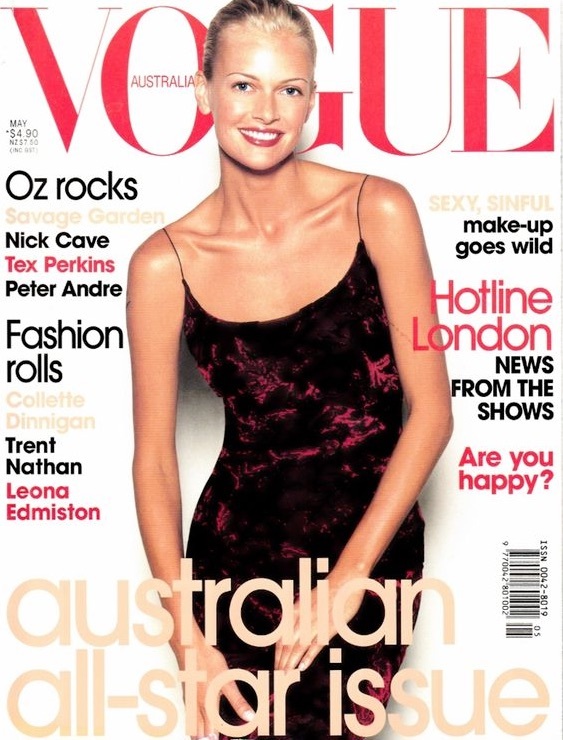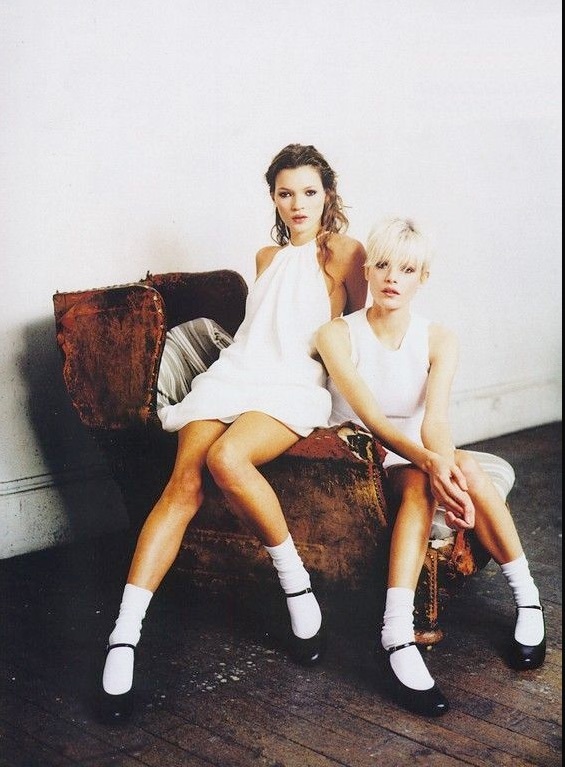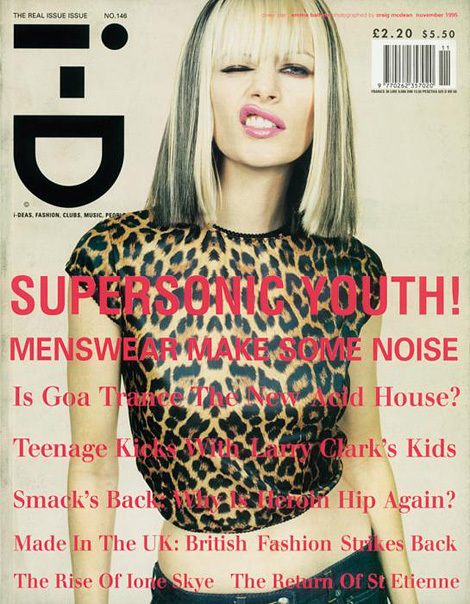For a remote country with a relatively small population, Australian models take up a fair share of the world’s covers and catwalks. Typically noted for being friendly collaborators with strong work ethics, models like Julia Nobis, Cat McNeil, Gemma Ward, Miranda Kerr and Abbey Lee have lent dimension to the industry and continue to elegantly carve their niche in fashion and beauty. But while each of them holds a place in the most relevant chapters of fashion’s recent history, individually they are worlds apart. Between holding down their professional modelling careers, some of them party, get tattoos and document their days on Instagram, others are busy balancing international demand with raising young families. While Cat McNeil is happy to share intimate moments getting facials or drinking beer with her friends, Julia Nobis doesn’t even have an Instagram account, rendering her private life just that. Regardless of their life choices, we revel in news about these models, devouring stories about their new relationships, haircuts, runway appearances or movie roles. By virtue of their jobs, they are fair currency in the culture of celebrity.
Besides the sea of social media and internet gossip however, this phenomenon is nothing new. During the 80s and 90s, Australia produced a handful of supers whose names appeared alongside those of Naomi, Christy, Kate and Linda. Our side of the world fostered beauties like Elle McPherson, Sarah O’Hare, Emma Balfour and Rachel Hunter (okay, yes she’s a Kiwi), the kinds of models with unattainable bodies and perfectly symmetrical faces who reigned throughout those decades, in a bubble that seemed impenetrable. During these years, in a universe with more patience and less turnover, these models came to define an Australian aesthetic for the rest of the world while also shaping beauty ideals in their own country.

Of this time, Elle McPherson is Australia’s most well known and successful supermodel. Her career began in 1982 when, at 18, she landed a television commercial for a low calorie version of the soft drink Tab. In the short video, Elle saunters up the beach in a red bikini as boyfriends are berated for turning their heads to watch her. As the body that would eventually get its own nickname was broadcast into homes around the country, Elle McPherson quickly became a name recognised by people around the world. In the years following, Elle cemented her profile with hard work and savvy business decisions. She frequently appeared in Elle Magazine, featuring on a bunch of covers and cameoing in every single issue for six straight years. At 21 she married photographer Gilles Bensimon, who was at the time the creative director of Elle. Consequently their glamorous lives were well documented and forged a vision of a glowing, utopian existence of long bronzed limbs at decadent events in small pieces of expensive couture.
TAB cola commercial, 1982
Elle McPherson amplified the Australian ideal of an approachable, fit, busty beach babe with salt in her hair and a perfect smile. She encouraged high cut bathers and a healthy lifestyle that she backed up with a series of self-hosted work out videos. Throughout the 80s and 90s she appeared on the cover of Sports Illustrated a record five times and to this day, not many people look better in a one piece. In 1996, Frank DeCaro of The New York Times gave Macpherson, along with Linda Evangelista, Christy Turlington, Cindy Crawford, Naomi Campbell, Helena Christensen and Claudia Schiffer the title of The Magnificent Seven. In Australia, her popularity grew to the extent that she was not only offered the position of ambassador of the tourism board by the government but also helped close the 2000 Olympics atop a float shaped as a giant camera. Even today, 35 years on, Elle McPherson is someone many look to as a true example of an Aussie success story and style icon.
Like Elle, Sarah O’Hare and Rachel Hunter were, more often than not, shot in bikinis on the beach. They too typified the idea of the well nourished, sun kissed Antipodean and sold a breezy dream to generations of locals. And though the stereotype of the Australian and Kiwi beach babe was impossible for these women to shake, Sarah and Rachel represented two different personalities and attitudes. Where Sarah was all coy, pure, girl-next-door with a slight frame and everything tasteful, Rachel embodied a more curvy siren who openly flaunted her sexuality. Sarah’s hair was brushed where Rachel’s was messy and wind-swept. Sarah had a much-copied, elegant tattoo of two stylised dolphins on her upper arm while Rachel had a tramp stamp. Even though they both appeared on the cover of Sports Illustrated, both modelled painted-on bathers at least once in their careers and both married famous men, they couldn’t have represented more distinct approaches to beauty.

In response to the reign of the impossibly perfect model, the 90s welcomed grunge and heroin chic. Kate Moss rose to stardom and right next to her was a quiet model you couldn’t take your eyes off from Adelaide named Emma Balfour. Emma seemed impossibly tall and thin and had the face of an ethereal angel, if that angel was a total punk. Slightly hunched with dark eye make up and dressed in minimal, androgynous pieces, she conveyed an aloofness and cool weirdness that resonated with a new culture also enamoured with Kurt Cobain and the idea of not giving a fuck. As a 20 year old living in London Emma was dating i-D photographer David Sims and they both agreed that, with her long hair, she didn’t suit being styled to look like a glamorous Claudia Schiffer stand in. As such, legend has it that upon David’s suggestion, Emma had all her hair cut off and emerged as the willowy urchin we remember so fondly. Emma Balfour became a reluctant style icon for girls around the globe who lopped their hair off in the hope of achieving her look.

Despite the popularity of these internationally recognisable names, being a supermodel from this side of the world, has its complications. Emma Balfour once noted that, “if you have any ambition at all, you hit the ceiling pretty fast in Australia and need to move away to go further”, and it’s a sentiment which sums up the issue of being a model so far from the major fashion capitals. Most of Australia’s supermodels grew their profiles internationally but many a career has been sacrificed with the decision to return home. Travelling between Australia and anywhere else is gruelling and its shine is bound to wear off. The return to family, friends and familiar territory is likely why the careers of our supermodels, in some instances, dimmed earlier than those of their British or American counterparts. Emma Balfour now raises her children in a eco-friendly house in Sydney and handpicks editorials and interviews she believes in, Elle runs an underwear empire and Sarah O’Hare is a dedicated mother and billionaire’s wife who works hard and remains a role model to many. Our 80s and 90s supermodels helped shape our country’s aesthetic and they did it despite their isolation and without the conveniences afforded to the new generation of incredible models being raised here today.
Credits
Text Briony Wright
